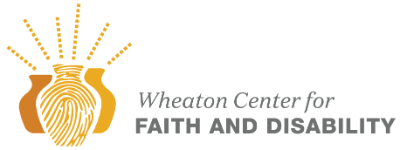Dimensions of Belonging
-800x615.png)
In 2016, we began studying what helps people feel like they belong in community, particularly for individuals and families impacted by disability. Being part of a community is vital to the thriving of any person, whether or not they have a disability.
Our research identified ten dimensions of belonging that reflect a trajectory of deepening relationship that includes being:
|
1. Present |
6. Accepted |
|
2. Invited |
7. Known |
|
3. Welcomed |
8. Befriended |
|
4. Cared for |
9. Needed |
|
5. Supported |
10. Loved |
In the years since we identified those 10 dimensions, our research has been used in a variety of school-based and congregation-based applications. We have since developed those 10 dimensions into five steps to relationships where everyone can flourish and thrive.
- Choosing
People make a choice to be in relationship with each other. A relationship is mutual; both people must choose to engage. Both must be Present and feel Invited. The key indicator of this step is mutuality. - Investing
Once two people have chosen relationship, investing helps the sense of belonging grow. Typically, this means each person is intentionally Welcomed and Cared For in a way that honors their dignity and value. The key indicator of this step is engagement. - Yielding
Growing a relationship often requires sensitivity around the unique needs of an individual, especially a person with a disability. This yielding results in a deepening relationship, leading each person to feel Supported and Accepted. The key indicator of this step is relational depth. - Committing
As the relationship deepens, each person becomes more fully Known. When the relationship progresses to each person being Befriended, they feel a sense of safety that can foster appropriate relational intimacy. The key indicator of this step is safety. - Flourishing
One goal of a deep relationship is transformation, growth, peace, and wholeness. This type of flourishing only comes when each person feels Needed and ultimately Loved. This is true belonging and the key indicator of this step is transformation.
Efforts to foster belonging must not be automatically presumed but must be intentionally pursued. This is true for everyone but even more so for the flourishing of people with disabilities. The presence and participation of people with disabilities is vital to the thriving of any community.
Some key articles and resources
- Being present versus having a presence: Dimensions of belonging for young people with disabilities and their families (Christian Education Journal)
- A place of belonging: Research at the intersection of faith and disability (Review & Expositor)
- Creating communities of belonging for students with significant cognitive disabilities (TIES Center)
- A place of belonging: Including individuals with significant disabilities in faith communities (Inclusive Practices)
- Five Steps to Relationships of Belonging and Flourishing (Sesame Street)
Disability Foundations
|
Theology of Disability |
Dimensions of Belonging |
Stages of Attitudes |



